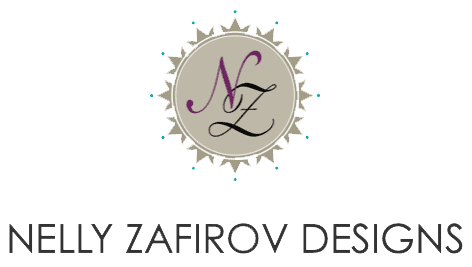Interior design for well-being
Geborgenheit
The German language has a wonderful word which is regrettably missing in English and many other languages – Geborgenheit. To translate its meaning into English, we need a rather wordy explanation. Geborgenheit denotes a feeling of security, comfort, relaxation, inner peace, warmth, love and acceptance – all united in one. It is an emotional state when we feel safe and protected, far away from worries and danger, loved and accepted as we are. This sensation can last for a long time or only for a moment.
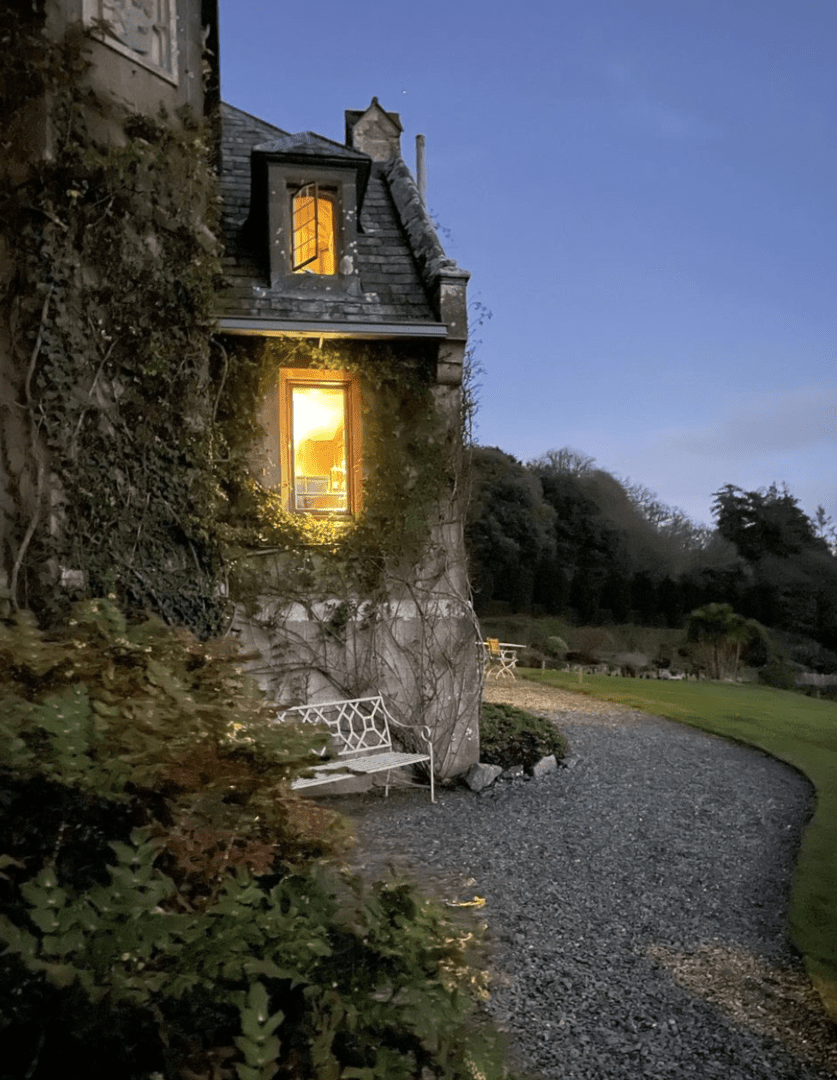
Sometimes, a momentary glance at a softly lit window can trigger our sense of Geborgenheit. Photo credit: @hotelendsleigh.
Why Feeling Geborgenheit is Essential for Us
Those moments when we experience Geborgenheit are essential for our well-being and health. When we feel safe and secure (German – geborgen), our body and mind are put at rest, the tension in our muscles decreases, our breathing slows down and its rhythm harmonises. In those instances, we get our self-confidence and positive thinking back, and our view of life’s challenges becomes more optimistic.
Our sense of Geborgenheit can be triggered by both physical surroundings and social contacts or by their simultaneous effect. For example, an archetype of socially defined Geborgenheit is the emotional bond of babies and small children with their mothers (generally – parents and caregivers). Whatever is happening and even when experiencing pain, children calm down and feel at their best in the presence of their mother. The awareness of being accepted, appreciated and loved by others makes humans develop stronger personalities; this process begins in childhood.
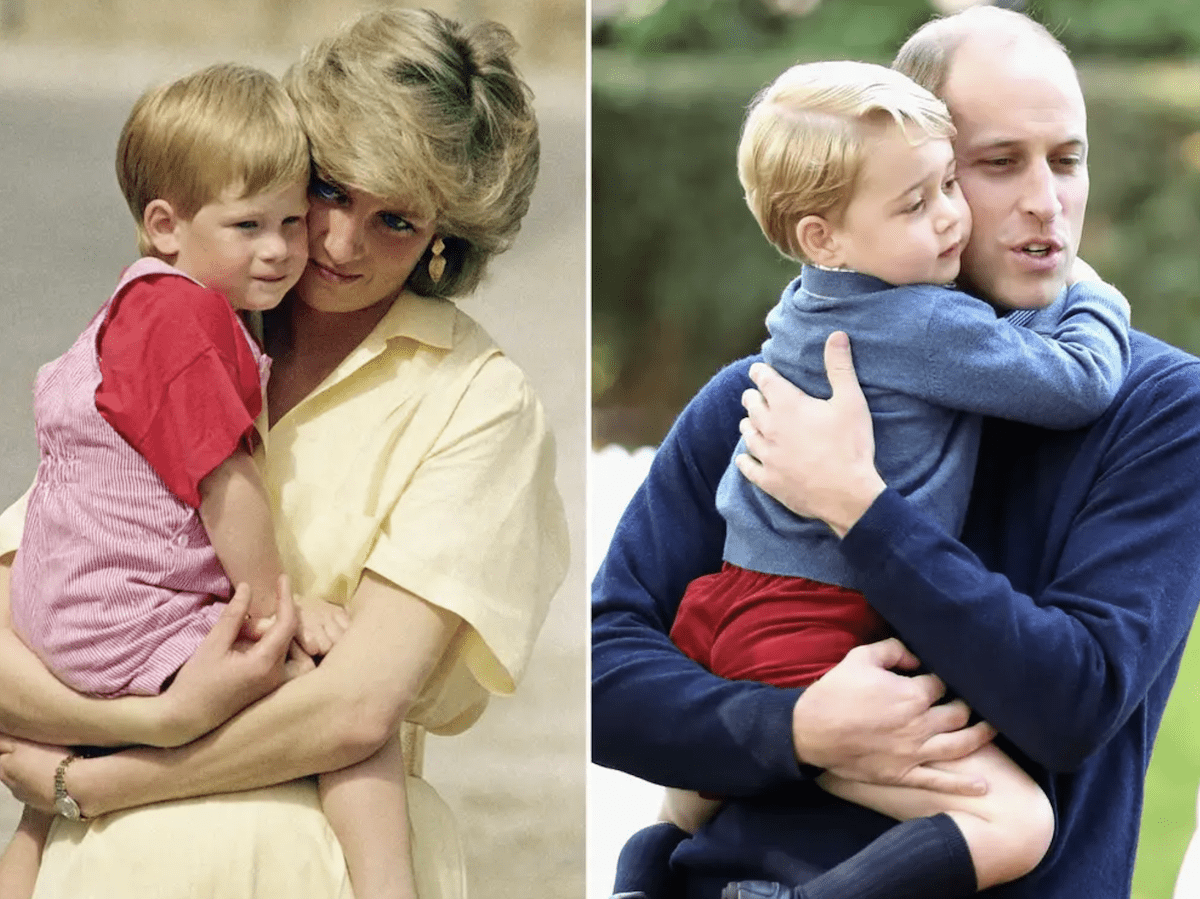
Nothing feels as delightful and protective as a parent’s hug: Prince Harry embraced by his mother, Princess Diana and Prince George in a tight hug with his father, Prince William. Photo credit: www.insider.com, Originals: Getty Images.
What Gives Us the Feeling of Geborgenheit at Home?
Familiar environments and, above all, our own home are a great source of security and comfort. Our home represents our outer self; it’s a personal expression of our soul, a place where we can honestly be ourselves, relax and recharge, and feel protected and safe.
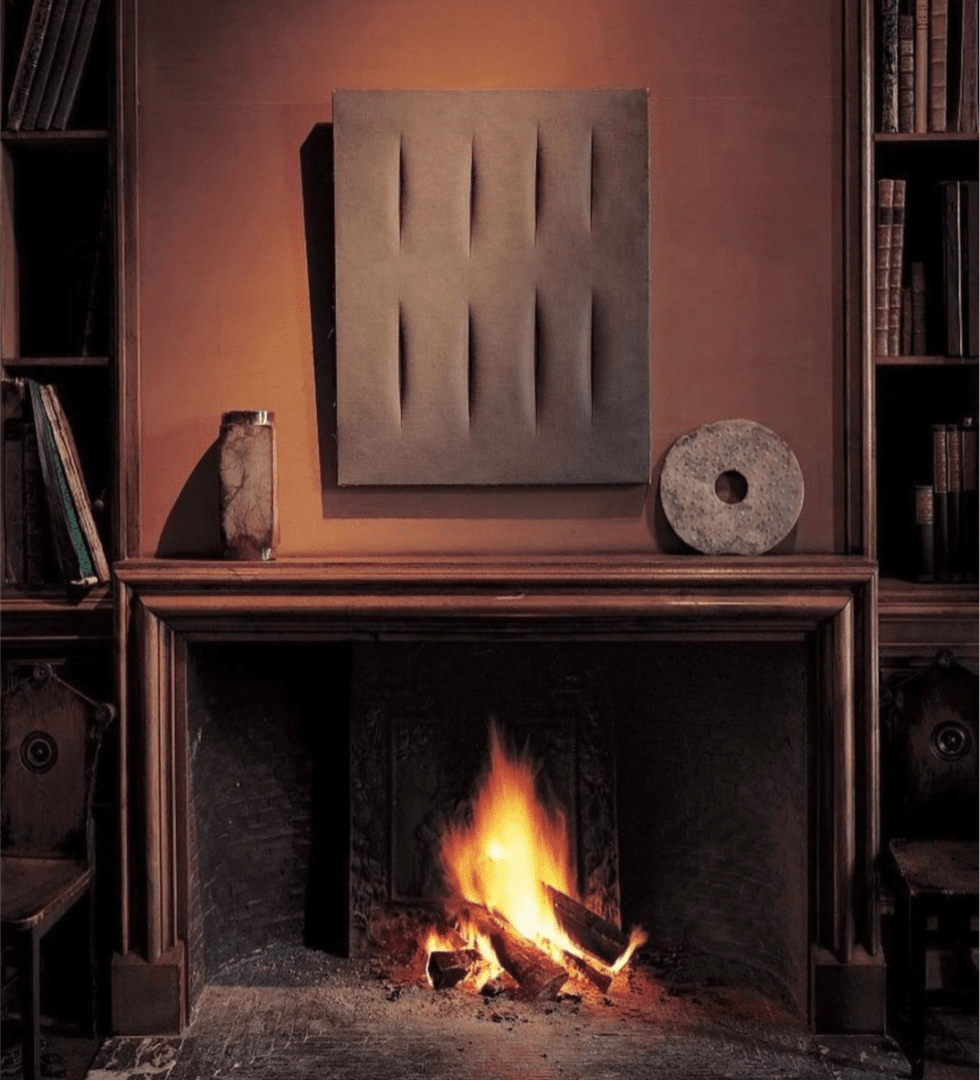
Ever since Prometheus gave fire to mankind, a fireplace has been the ultimate symbol of Geborgenheit – an embodiment of warmth, cosiness, protection and human intimacy. A fireplace in a room designed in warm hues of brown. Interior design by Axel Vervoordt. Photo credit: @theartreporter.
Some physical objects, regular pleasant activities or repeating rituals can bring us to a state of Geborgenheit that we feel at home. However, we tend to be captivated by the sense of Geborgenheit when we are not in a rush but in a state of rest and reflection or during quiet activities.
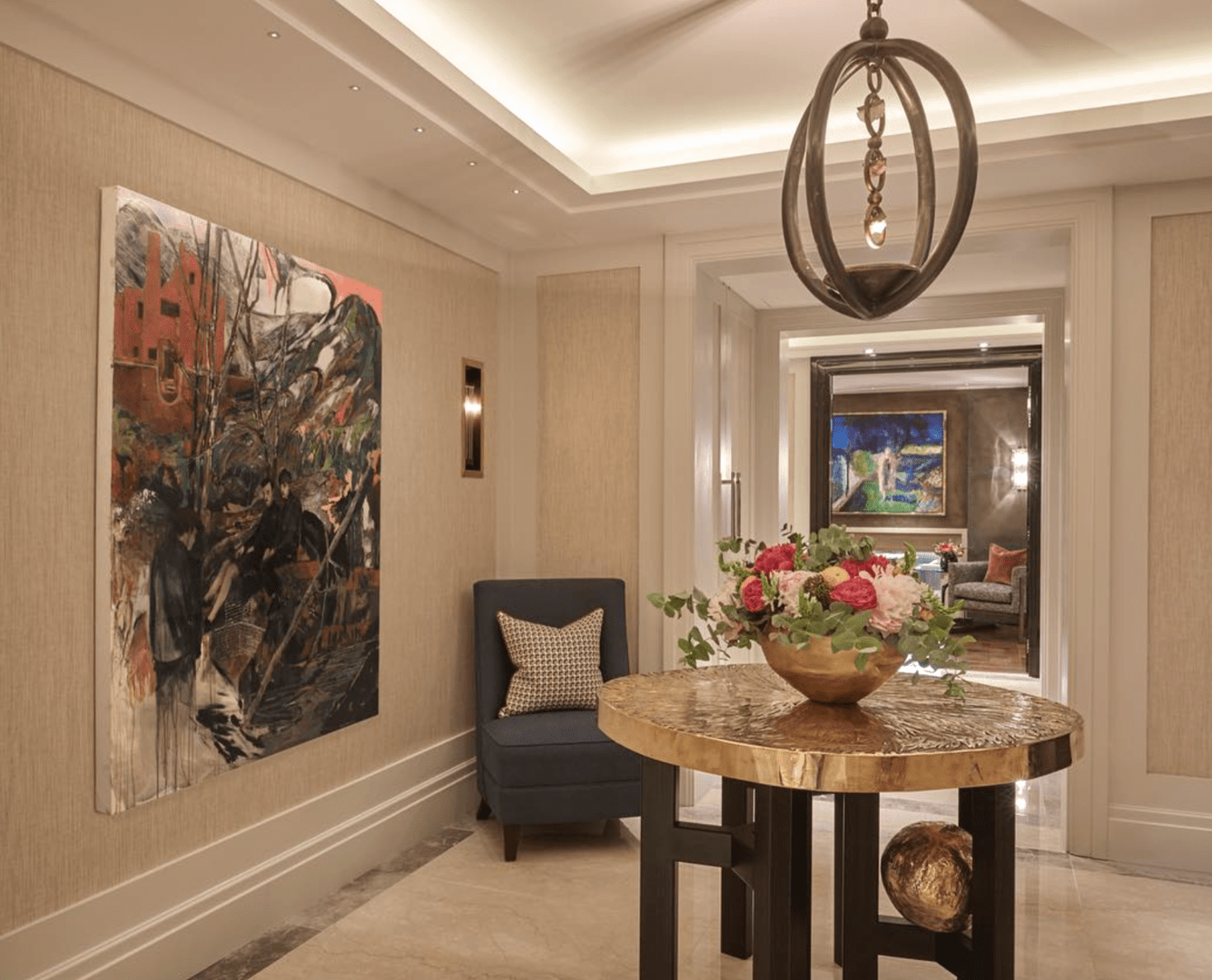
We experience this feeling of Geborgenheit the moment we open the front door. As soon as we cross the doorstep, we breathe in the familiar atmosphere with relief. The flowers on the table and the painting on the wall greet us and smile familiarly as if to say they have been waiting for us. Image: a hallway by the London-based Helen Green Design Studio. Photo credit: @hgdstudio.
Everyone has their own distinctive taste and style; however, there are interior features that can enhance our feeling of Geborgenheit at home. Let’s draw your attention to some of them, and maybe you will find what you need to change or add to your home interior if you want to experience this special feeling more often.
Differentiating Our Own Place from the Outside World
Whether modern or traditional in style, the primary function of a home is to be a proper shelter for its occupants, giving them physical protection and emotional comfort. Although man is a social being, every individual needs their nook of privacy, where they can be and feel by themselves, knowing that they cannot be disturbed or watched at that moment. The contemporary trend of open-plan living spaces, not only without walls and doors separating inner rooms but also without curtains separating our world from the outer one, is not what human nature needs to calm down, relax and truly recover. This dwelling concept does not allow a person to shut out the outside world; at least subconsciously, we feel watched by fellow residents or from outside. Therefore, it is wise to create nooks of privacy at home.
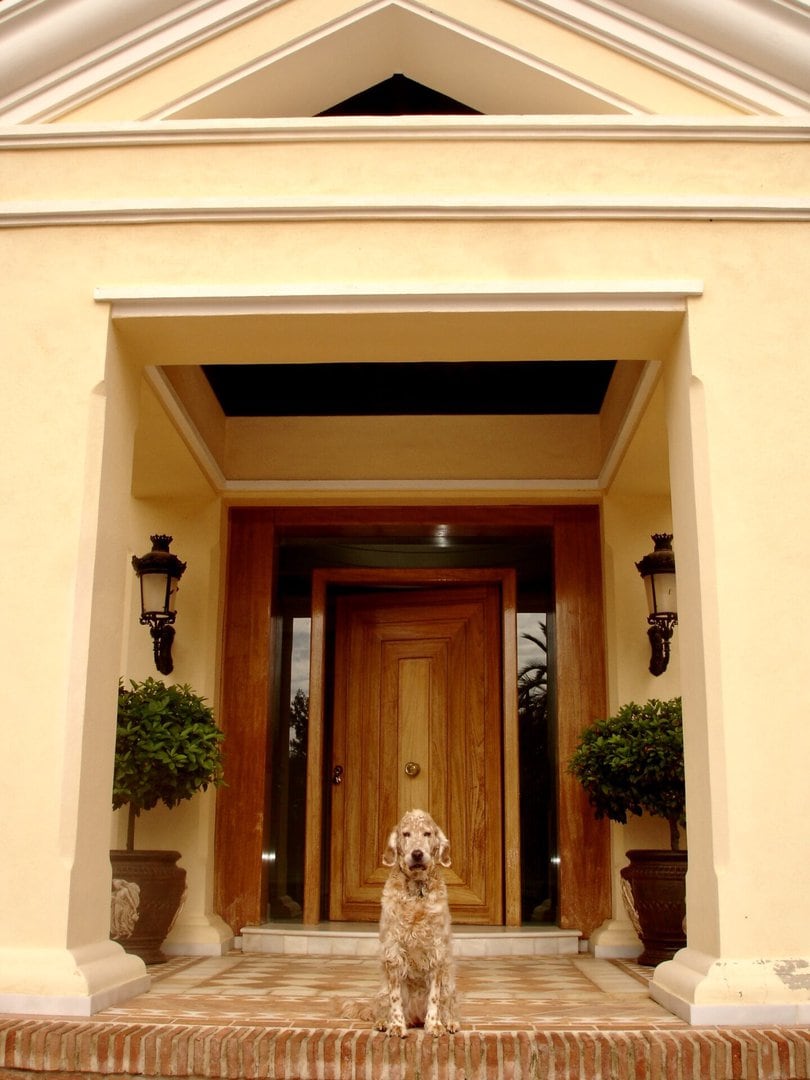
Humans need doors, curtains and walls to feel safe and secure, if only on an unconscious level. Image: A massive door is a symbol of a solid home. Photo credit: Nelly Zafirov Designs.
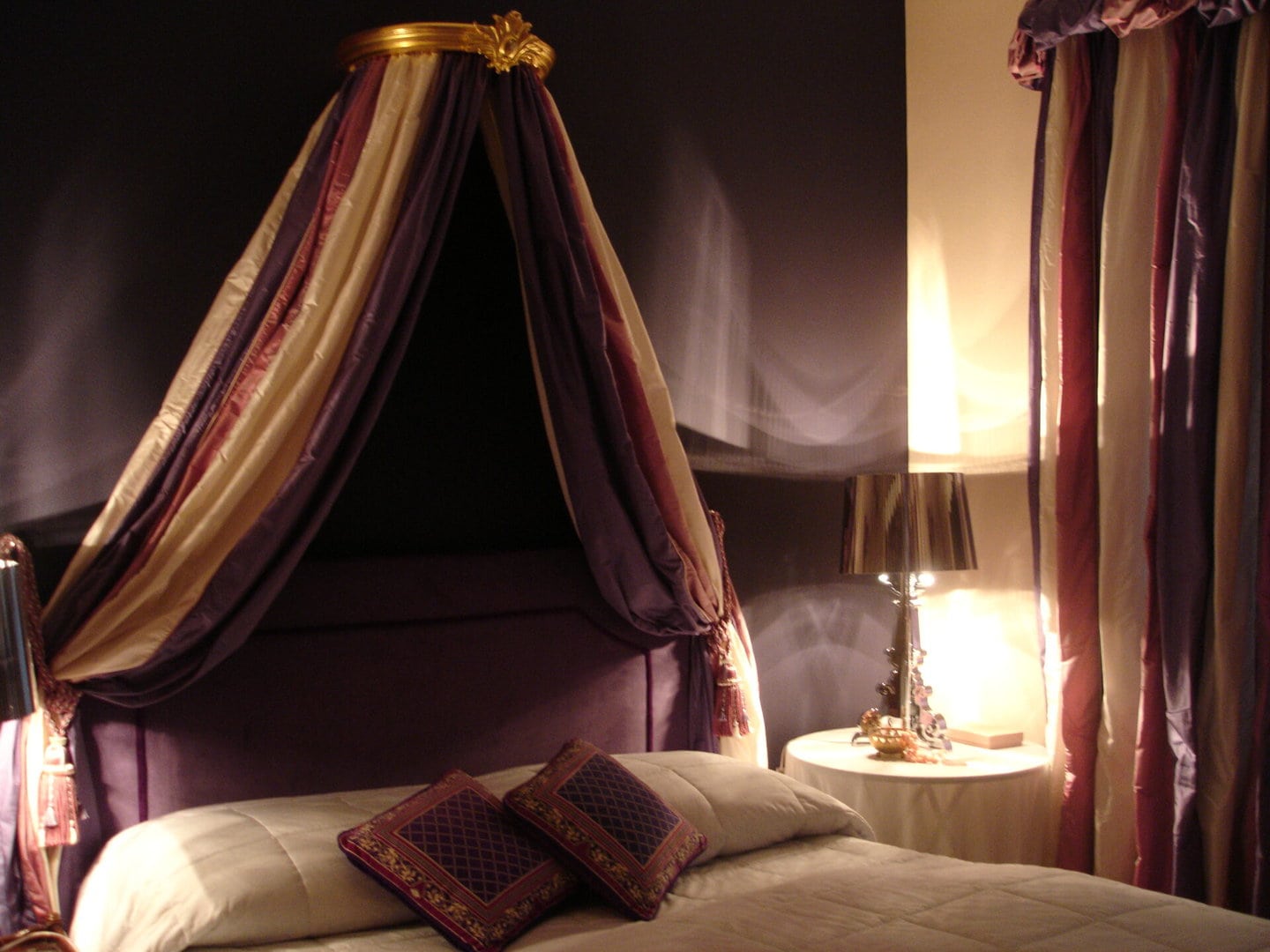
Painted in a contrasting deep dark blue, like the night sky (Bible Blue by Farrow & Ball), the wall behind the bed’s headboard provides a sense of stability and protection. Interior design and Photo credit: Nelly Zafirov Designs.
.
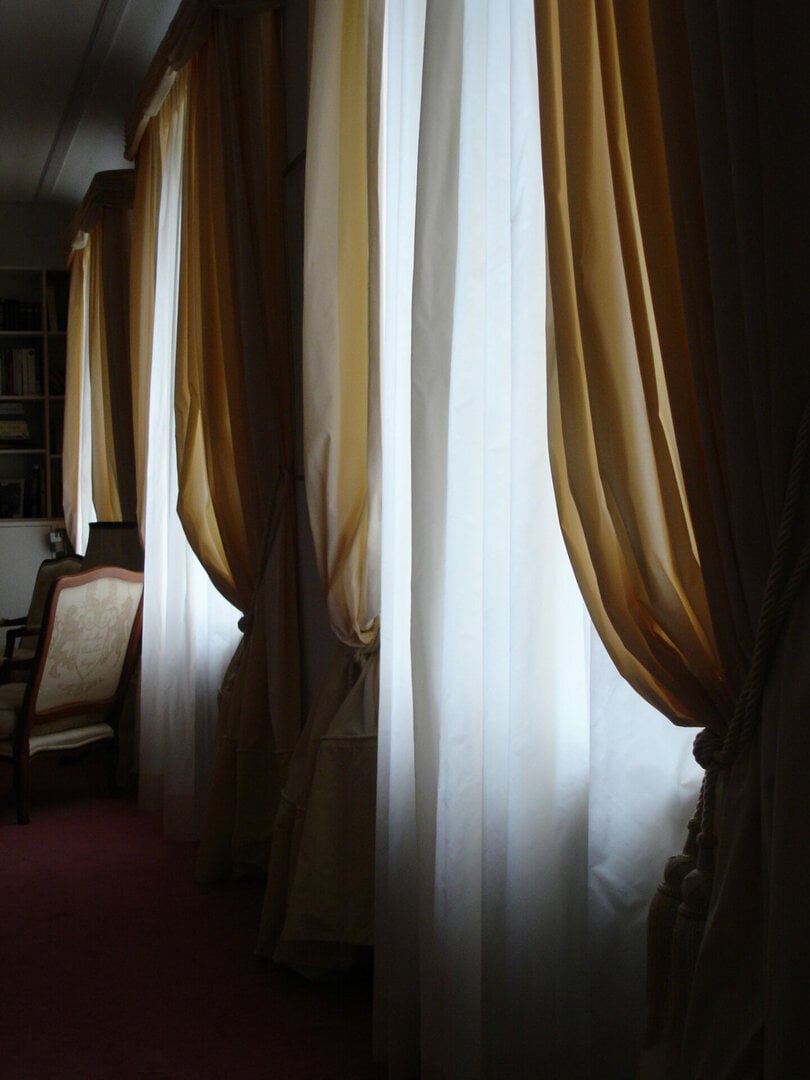
Even the finest curtains can give us a feeling of safety and intimacy. Design and Photo credit: Nelly Zafirov Designs.
The need to put borders between ourselves and the outside world is intrinsic to humans and is deeply rooted in our prehistoric past when that was all about lifesaving. We can observe this instinct in the play of small children who intuitively create their own little house-within-a-house to feel protected. A four-poster bed and bed hangings in an adults’ bedroom implement the same idea.
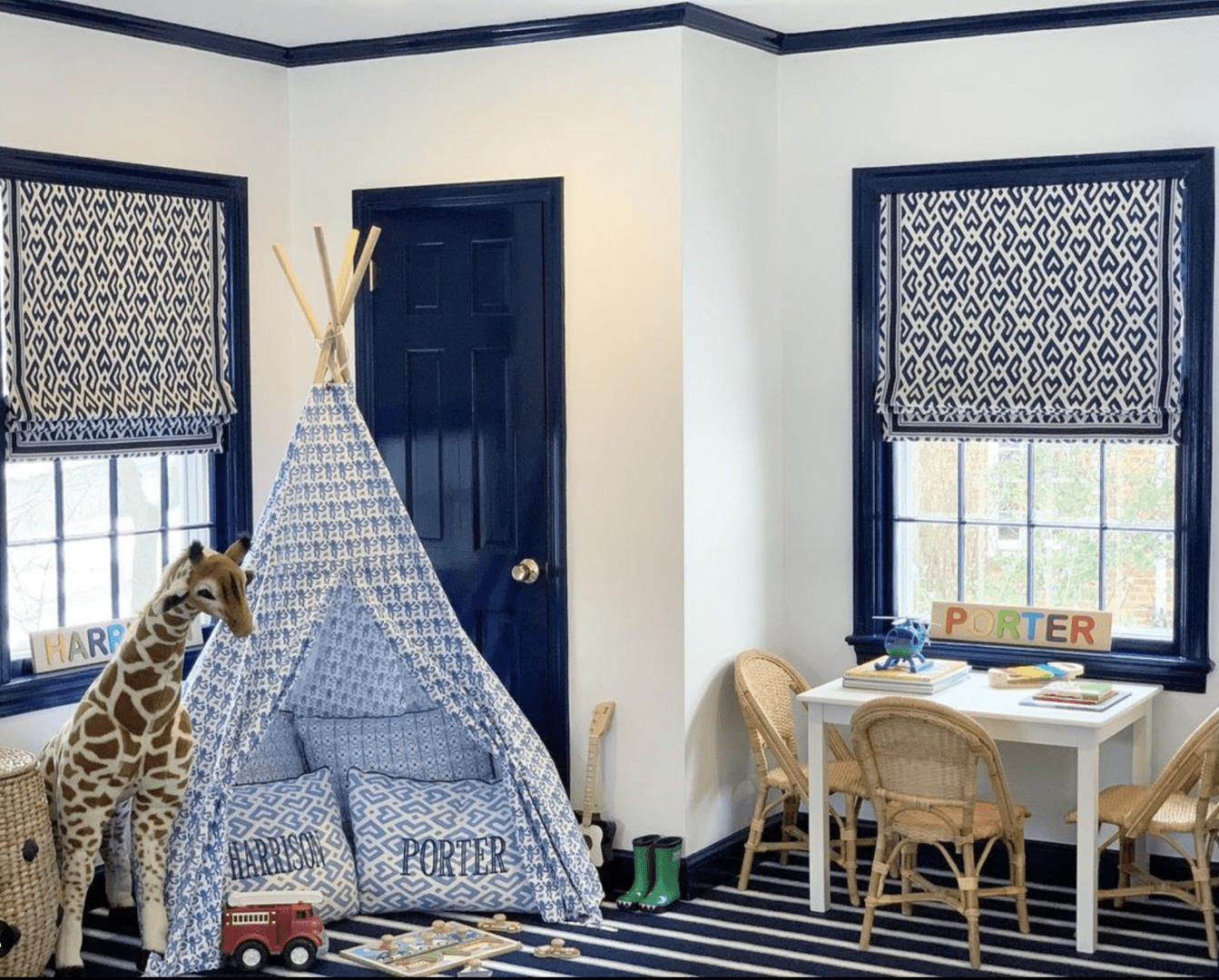
Children feel great comfort when they can create their own house-within-a-house. Featured: a children’s tent “built” in their room. Interior design by the Washington, DC firm Griffith Blythe Interiors. Photo credit: @griffithblytheinteriors.
The Sense of Cocooning at Home
Our sense of Geborgenheit is not necessarily associated with a spacious, brightly lit and impeccably tidy room. On the contrary, what we sometimes need to feel comfortable and well-protected is a hidden nook, a messy yet cosy sofa with a cuddly blanket and an abundance of soft cushions, a place lit by candles, the look of a softly glowing fireplace, or tender sunlight gently penetrating through the curtains. It is interesting to notice that the semantics of the noun Geborgenheit includes such meanings as – hide, rescue, and the adverb geborgen – be in good hands, hidden, sheltered, protected, and also cherished and beloved.
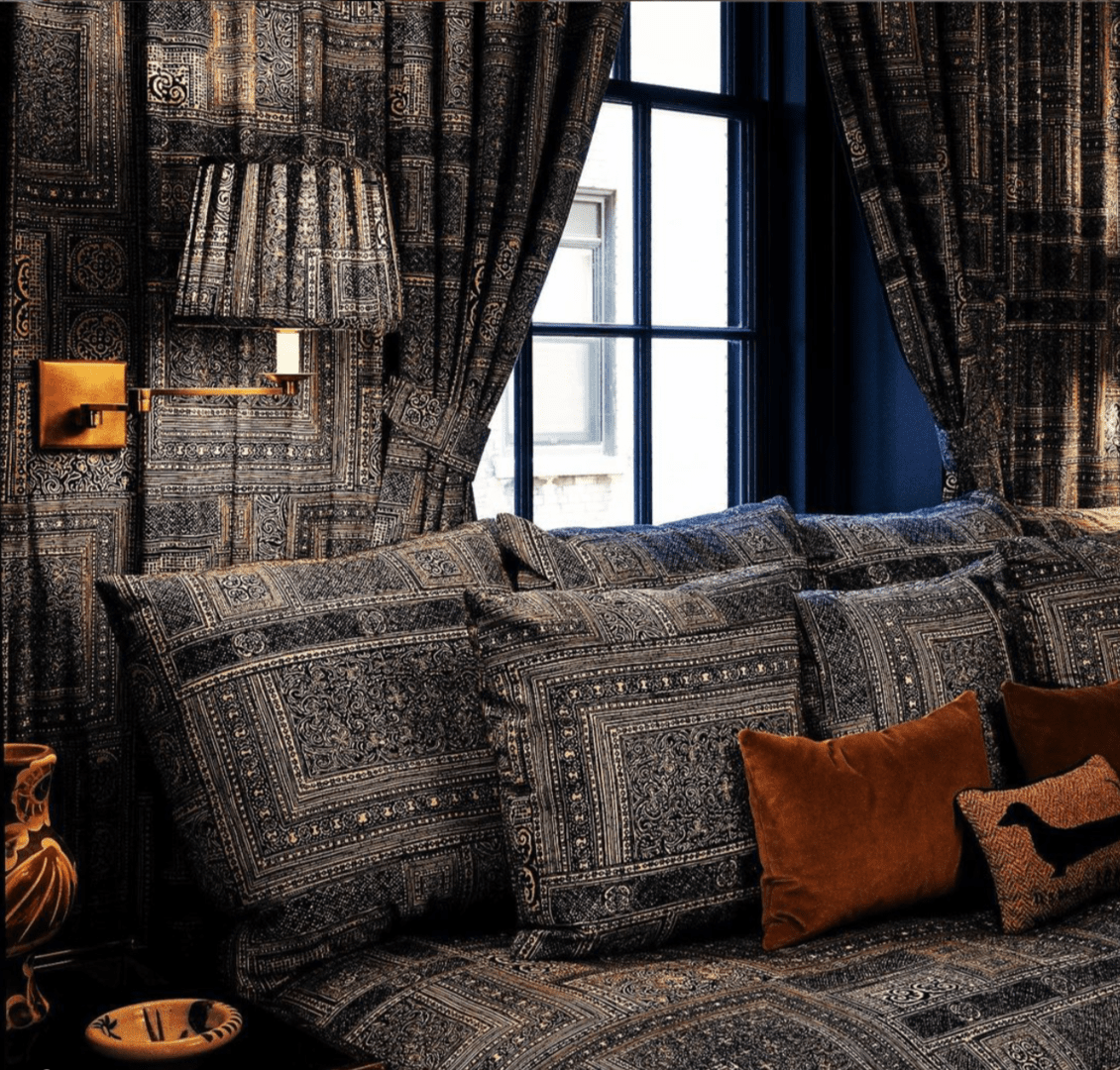
The soft furnishings, darkened atmosphere and the shell of an all-over fabric pattern create a cosy cocooning feeling in this family room. Interior design by Virginia Tupker. Photo credit: @virginiatupker.
Warm Colours, Soft Finishings and Round Shapes
In general, spaces and furnishings in warm nuances (colours containing hints of yellow and red), having a soft finish (e.g. wooden or velvety), and curvy shapes or lines are perceived as more pleasant and relaxing than cold colours, sleek and shiny finishings, and rectilinear and sharp features.
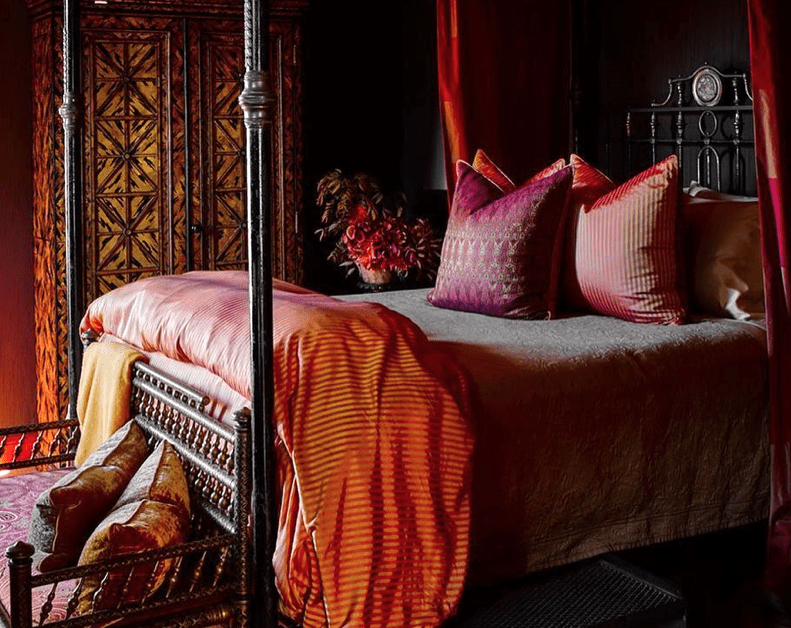
Lounging on an array of soft cushions and an enveloping downy blanket in a dimly lit room entirely clad in warm hues gives a sublime sense of cosiness and protection. Image: A bedroom designed by Ken Fulk. Photo credit: @kenfulk.
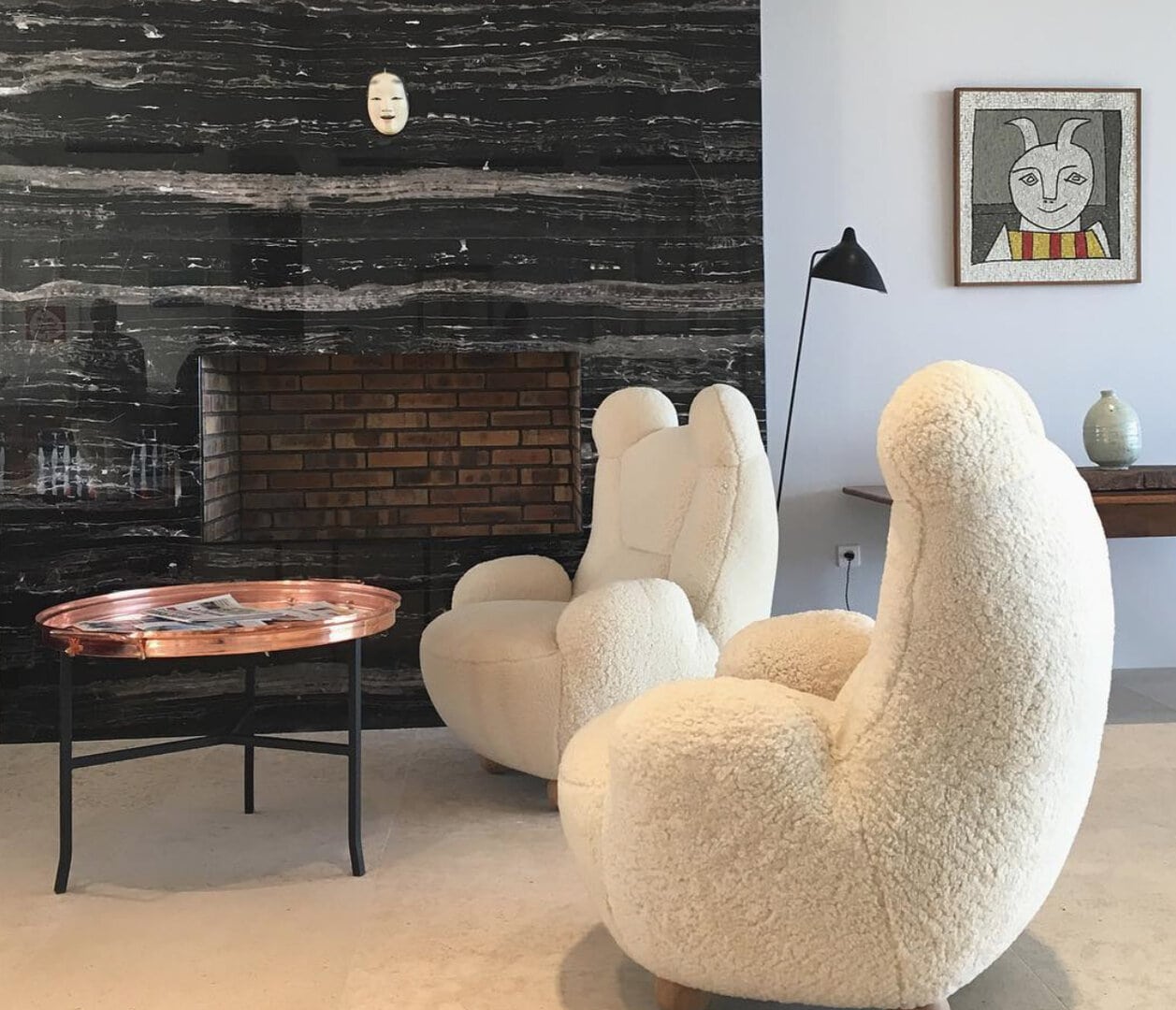
What a wonderful feeling to fall into the cocooning embrace of those armchairs with their bear-like shape and sheepskin cover. Bear armchairs designed by Pierre Yovanovitch. Photo credit: @pierreyovanovitch.
Personalised Interior
This drawing of mine when I was five…, the ceramic we bought on our trip to Africa…, and that photograph…, the familiar view from the window…
In a non-verbal way, some things can communicate to us and transmit this delightful feeling of Geborgenheit. They can be large or small, costly or inexpensive, material or abstract; their common feature is their strong personal character.
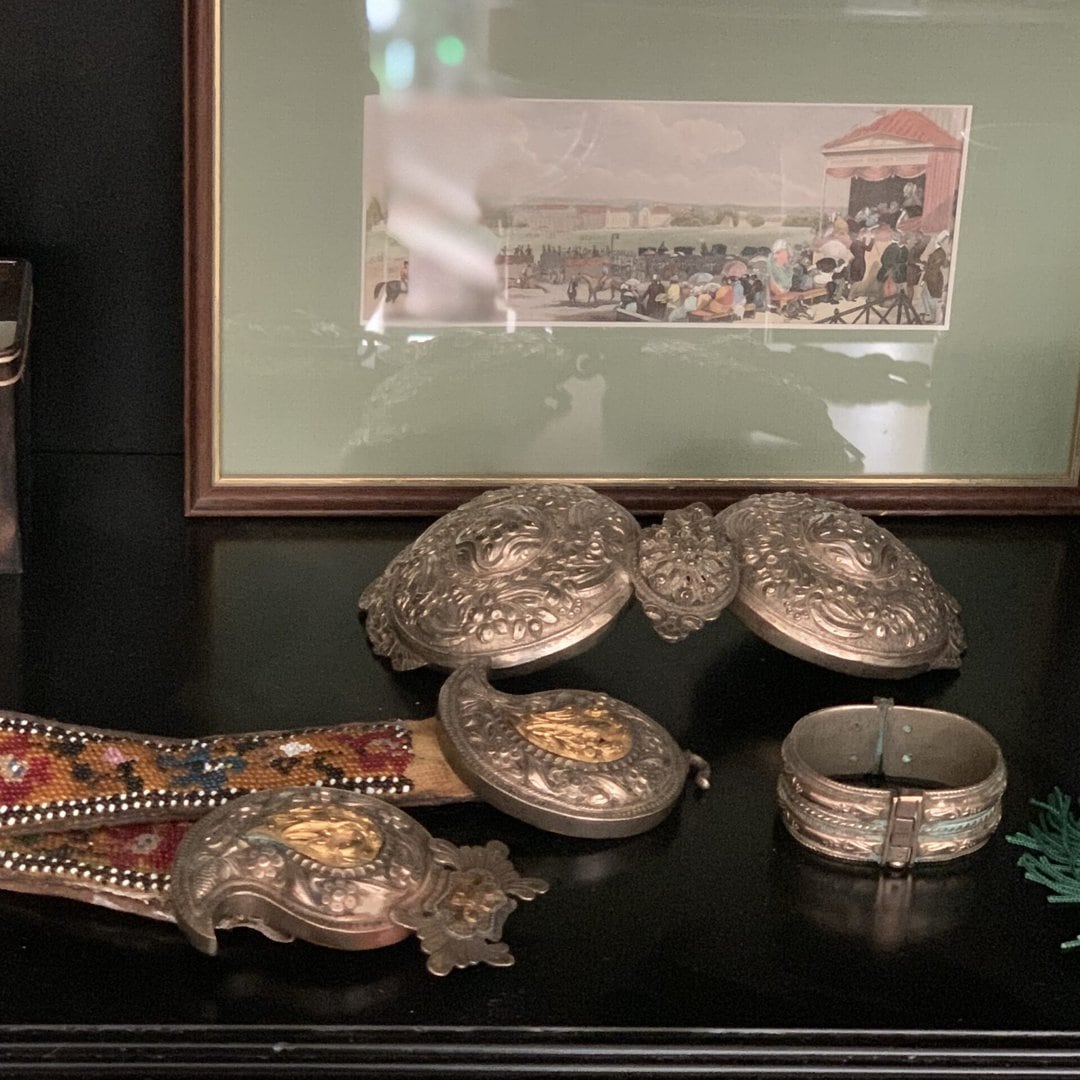
Attire accessories belonging to my great-grandma: family heirloom on the shelf in my study, reminding me where I come from. Photo credit: Nelly Zafirov Designs.
The feeling of Geborgenheit can be retrieved by the overall mood of a room – everything neat, as we always have it, or the artistic disorder., typical of us. Both can suggest a spirit of coming home, returning to oneself.
Attire accessories belonging to my great-grandma: family heirloom on the shelf in my study, reminding me where I come from. Photo credit: Nelly Zafirov Designs.
The feeling of Geborgenheit can be retrieved by the overall mood of a room – everything neat, as we always have it, or the artistic disorder., typical of us. Both can suggest a spirit of coming home, returning to oneself.
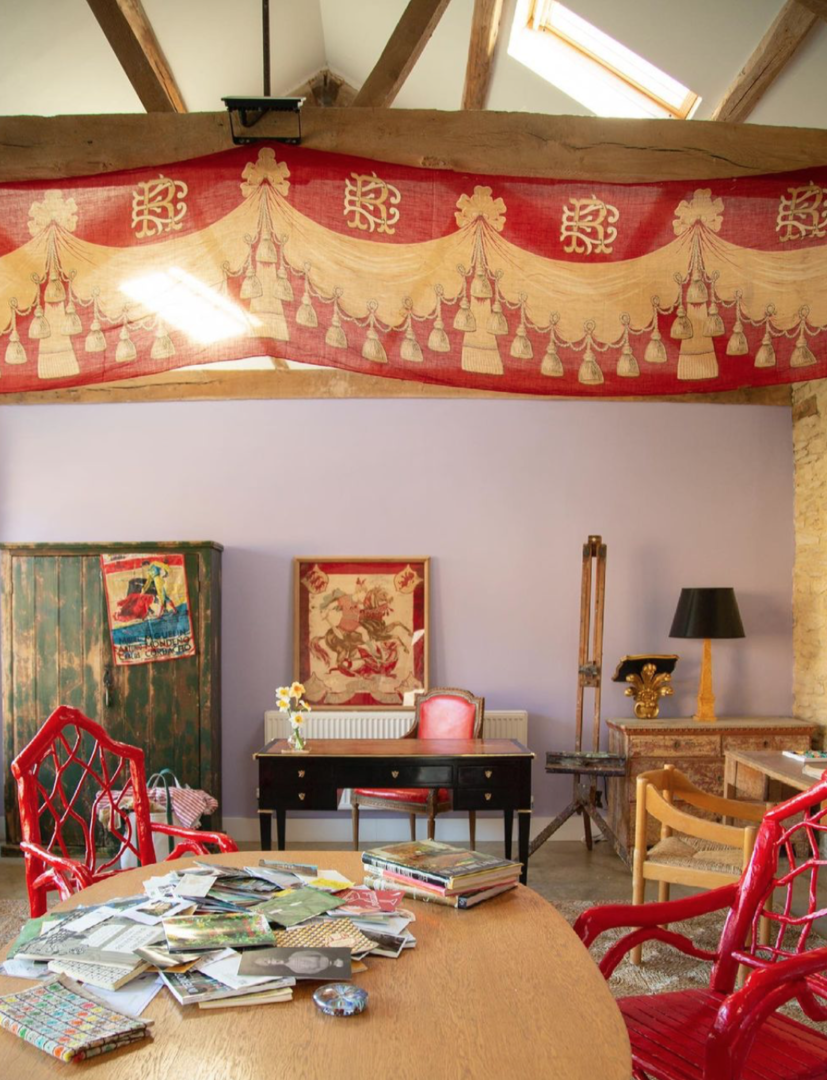
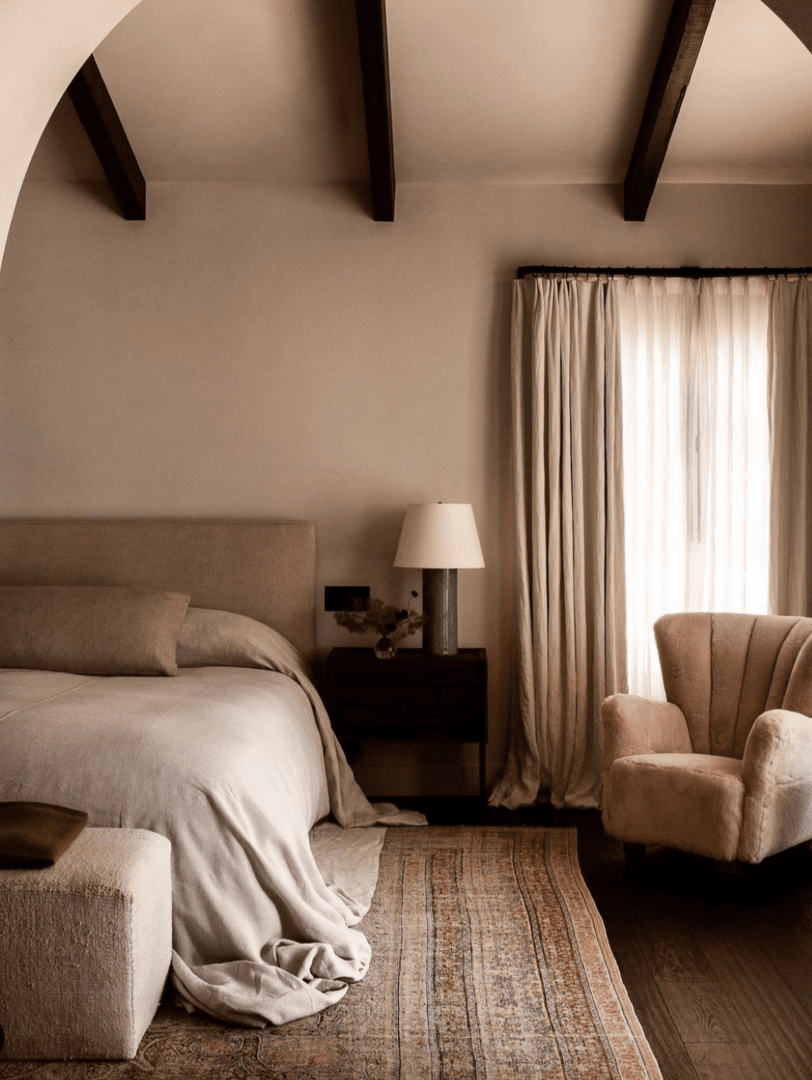
Could the need for Geborgenheit of two young people be more different? Image links: The private world of the English designer Luke Edwardhall is just like his creations – joyful and eclectic. Photo credit: @lukeedwardhall; Image right: Who would guess that the glamorous fashion trendsetter Kendall Jenner sleeps in this earthy and serene bedroom? Interior design by Clements Design. Photo credit: @clementsdesign.
Pleasant Activities and Rituals Repeated Again and Again
Oh, that delicious smell of Advents cookies…, and all the festive preparations for Christmas…,
Social and individual rituals such as making that first cup of coffee in the morning or singing and listening to the same Christmas songs every year bring feelings of Geborgenheit. With a hint of lovely past experiences and, sometimes, sweet nostalgia, again and again, these rituals remind us of our self-identity, roots and sense of social belonging, generating an idea of continuity and stability in our life.
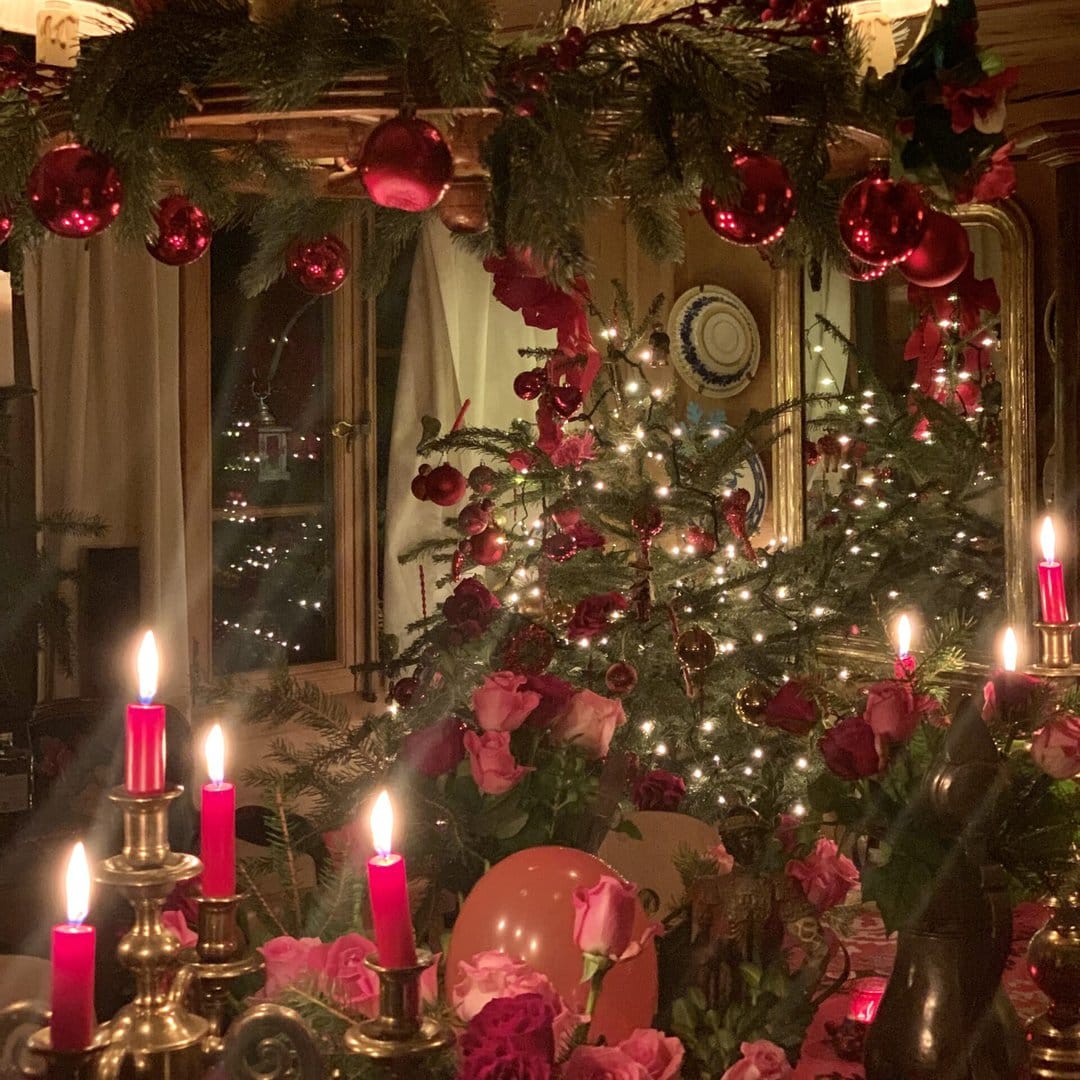
Christmas at the Nussbaumer’s chalet in Gstaad, decorated by the hostess, Michelle Nussbaumer, in her signature more-is-more whimsical style. Photo credit: Nelly Zafirov Designs.
Feeling that sense of Geborgenheit
means
boosting our emotional well-being
and mental health.
As words journey from language to language, it may be time to adopt this confidence-boosting word in English and other languages, as we have done, for example, with zeitgeist, über and many other German words.
